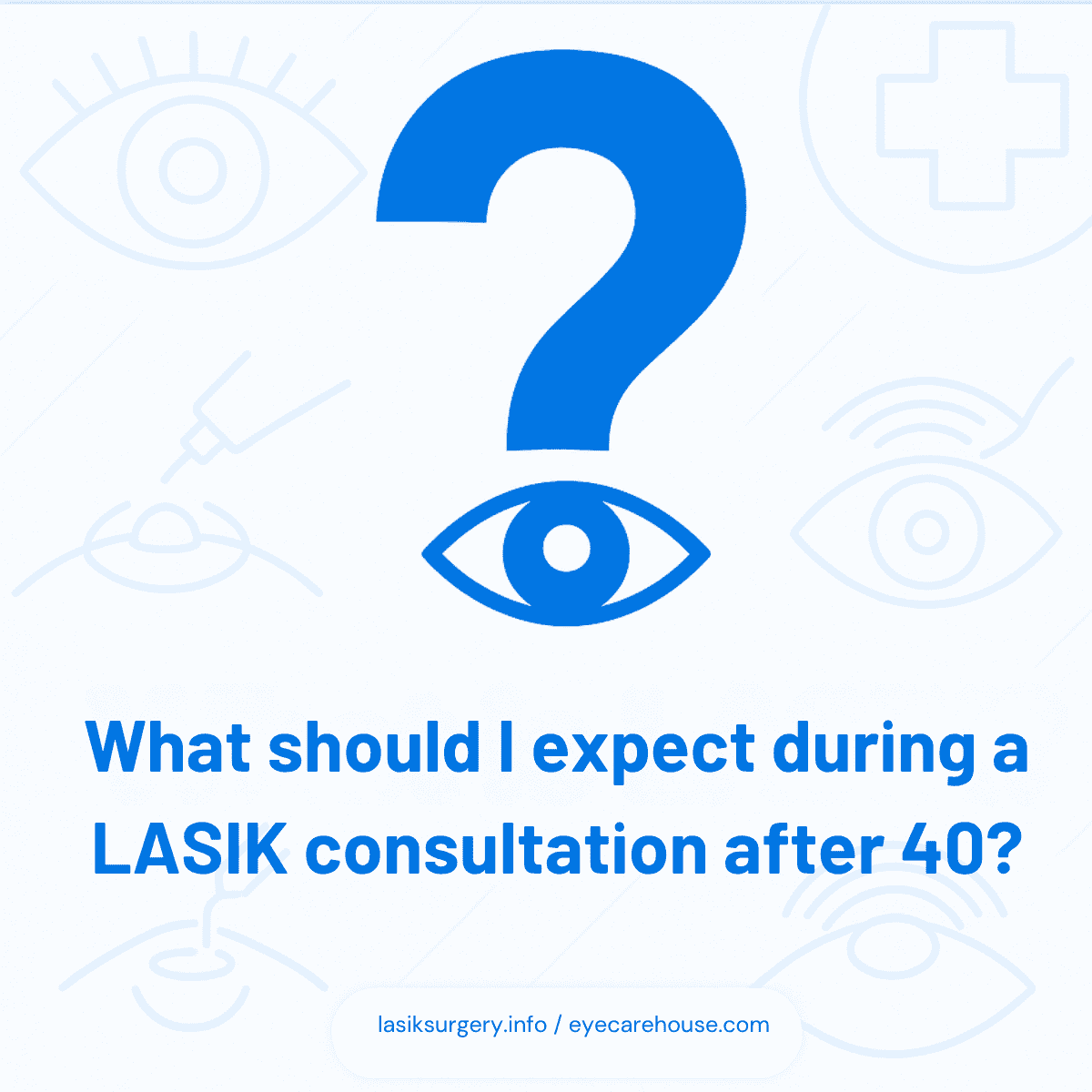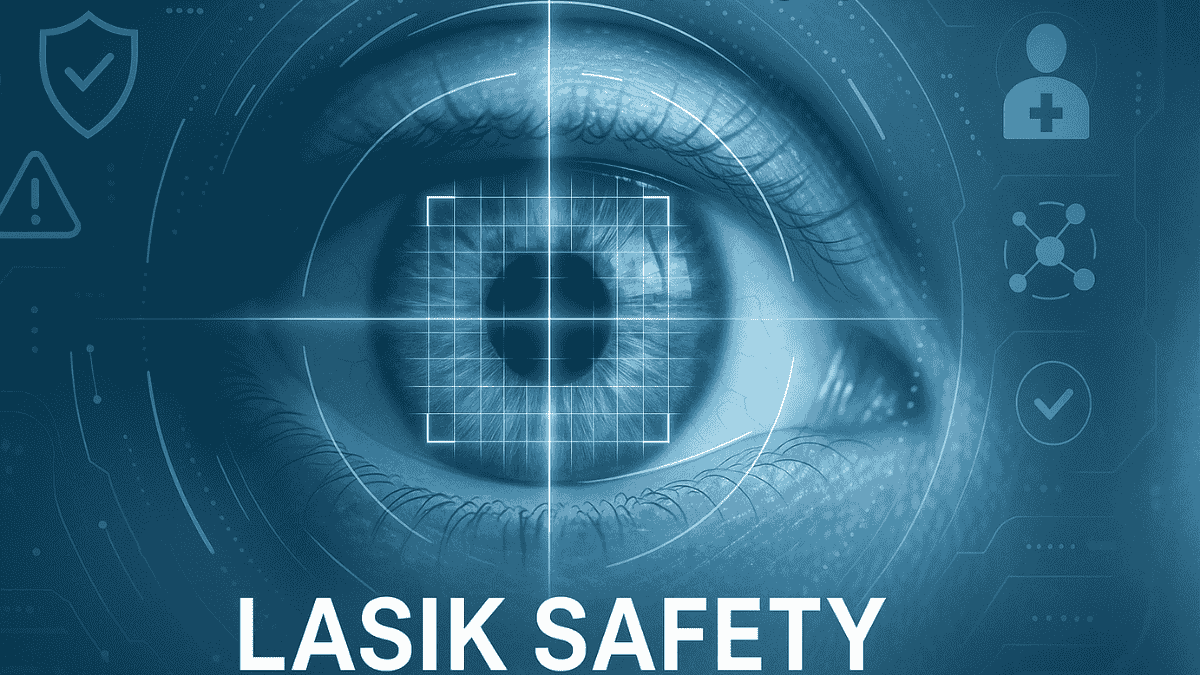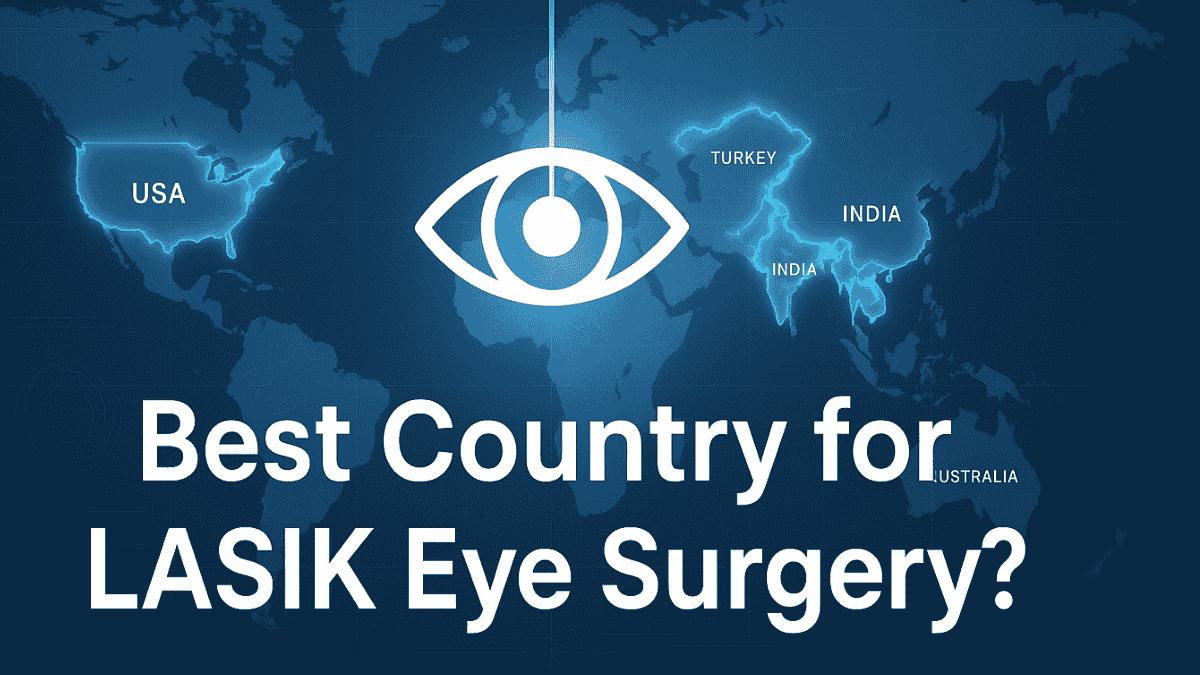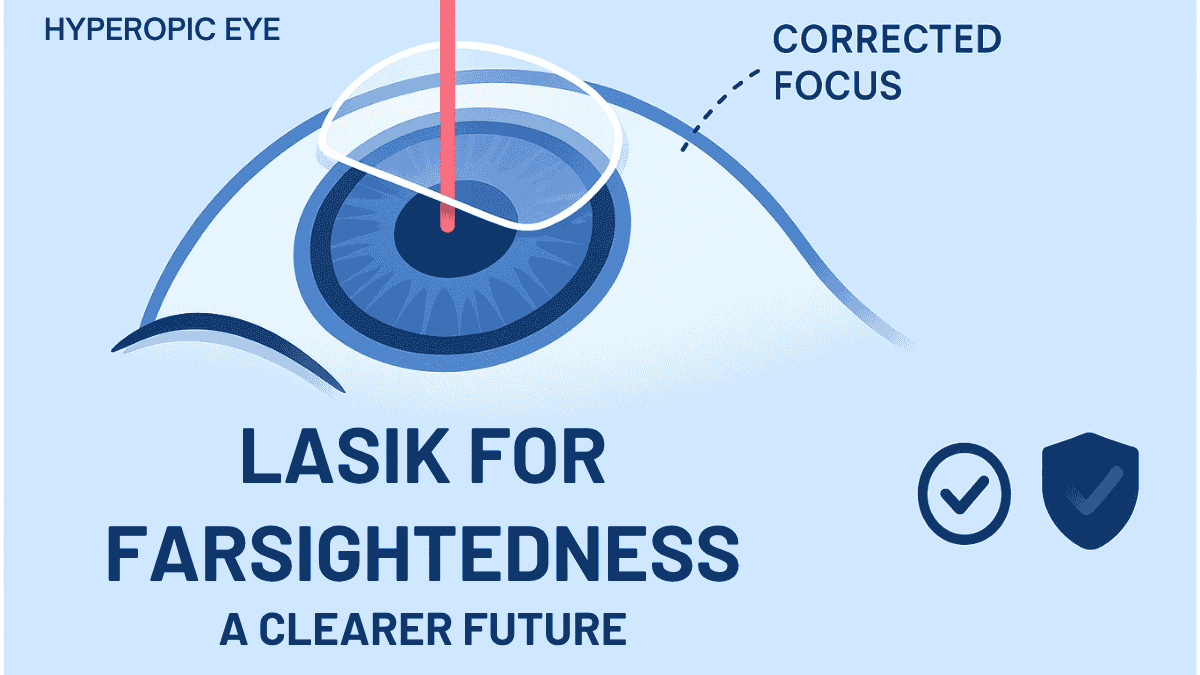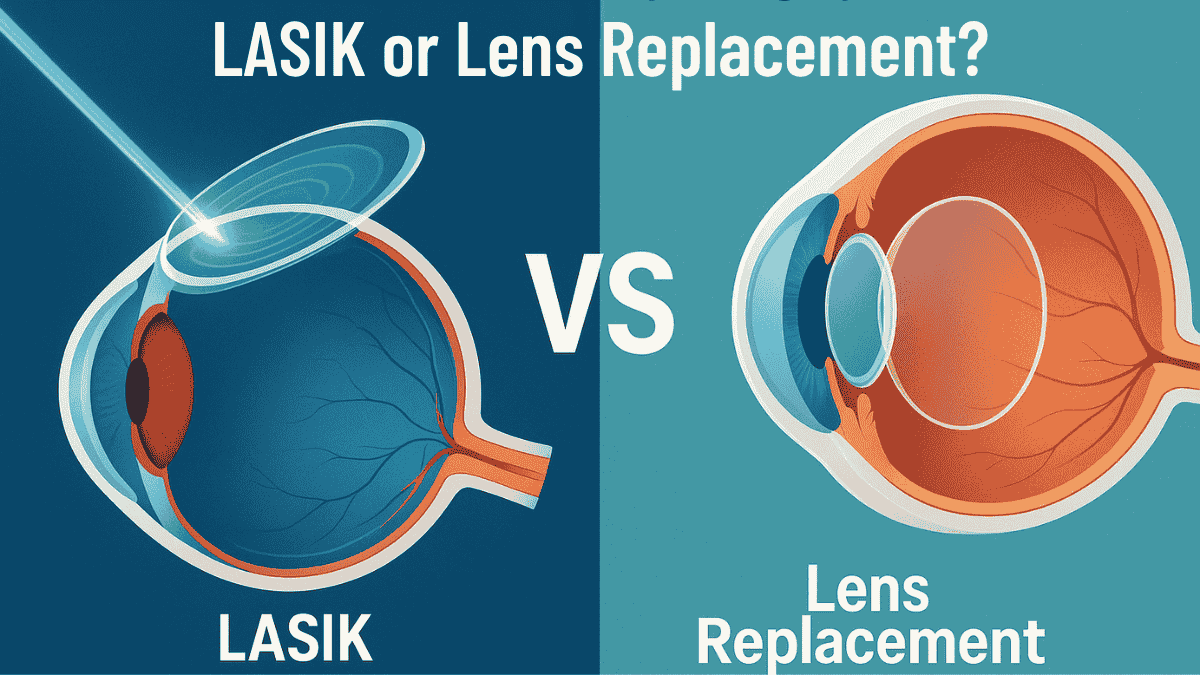
Hitting 40 often comes with a common observation: your arms suddenly seem too short for reading your phone. If this sounds familiar, you’re likely among many contemplating lasik after 40. Can vision correction surgery still be a beneficial choice as you age? This question is on the minds of many in their forties and fifties, as lasik after 40 presents different considerations compared to younger individuals aiming to restore vision.
Table of Contents
What Really Happens to Your Eyes After You Turn 40?
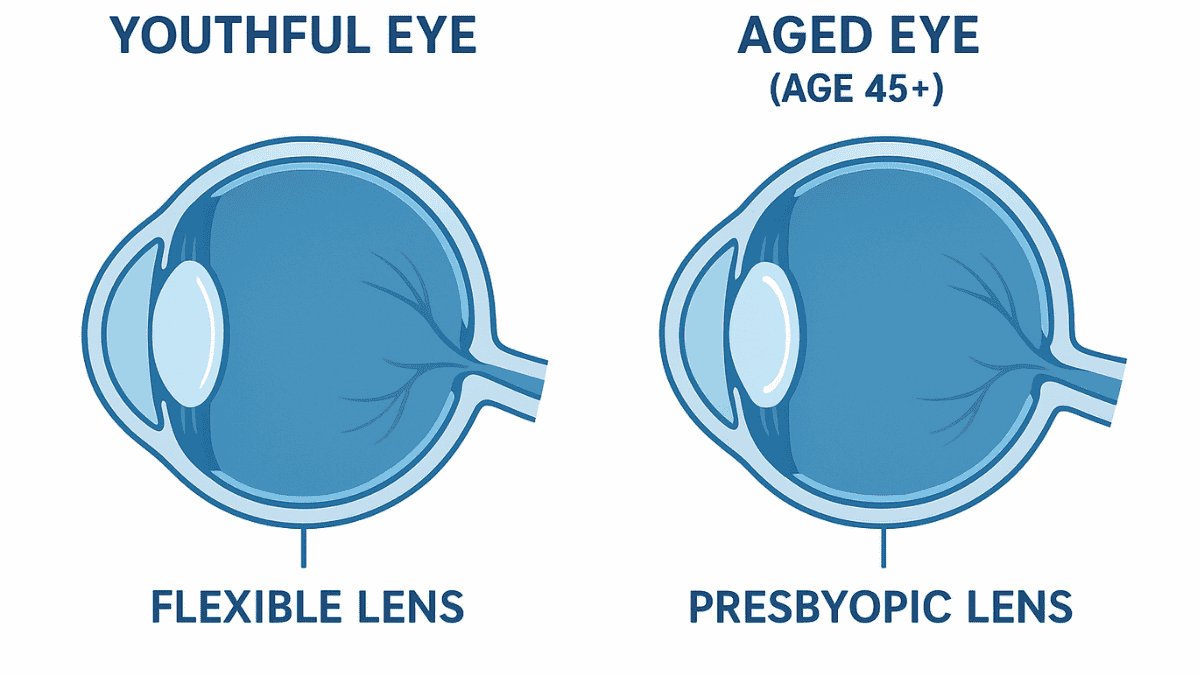
Around the age of 40, most individuals begin to notice a distinct change in their near vision, an experience often prompting them to investigate vision lasik. This shift is not a personal failing but a natural aging process known as presbyopia. The natural eye lens, once flexible and capable of quick adjustments much like a camera’s autofocus, starts to stiffen with age.
This stiffening makes it increasingly difficult for the eye to focus on objects up close. Tasks like reading books, deciphering restaurant menus, or simply viewing your smartphone screen can become challenging. It is a common eye condition that differs significantly from other refractive error issues.
Presbyopia is distinct from vision problems such as nearsightedness (myopia), farsightedness (hyperopia), or astigmatism. These other eye conditions typically relate to the shape of your eyeball or cornea, affecting how light focuses on your retina for distant vision. While LASIK surgery is highly effective at correcting these distance-related refractive errors, presbyopia specifically concerns the aging natural eye lens and its diminishing ability to focus on near tasks, often leading to the need to wear reading glasses.
So, Can You Get LASIK After 40?
The straightforward answer is yes, obtaining lasik eye surgery after 40 is certainly possible and frequently successful. Many individuals in their forties, and even into their fifties, undergo laser vision correction with positive outcomes. However, the process and considerations are not identical to those for a younger patient, primarily due to presbyopia.
A qualified lasik surgeon will conduct a comprehensive lasik evaluation to determine your suitability. This involves examining your overall eye health, the stability of your vision prescription, and discussing your lifestyle and visual goals. Certain eye conditions, such as severe dry eye syndrome, glaucoma, uncontrolled diabetes, or existing cataracts, might make LASIK a less suitable option, but for many with healthy eyes, lasik laser eye surgery at 40 remains a viable path to clearer vision.
It’s important to have a stable vision prescription for at least a year before considering the lasik procedure. Advanced techniques like Contoura Vision, a topography-guided LASIK, may offer more personalized treatment, potentially improving not just how much you see, but also the quality of your vision. Your eye doctor will discuss if such advanced vision procedures are appropriate for your specific needs.
Related Article
LASIK Consultation: What to ExpectUnderstanding Presbyopia When Considering LASIK
It is very important to grasp this key point: standard LASIK surgery is primarily focused on correcting your distance vision. If you are nearsighted, the procedure can enable you to see distant objects clearly without corrective lenses. Similarly, if you are farsighted, traditional LASIK can correct that refractive error as well.
However, standard LASIK does not directly resolve presbyopia, the age-related decline in near vision that often necessitates reading glasses. This means that if you undergo LASIK to achieve perfect distance vision, you will likely still require reading glasses for close-up tasks like reading or working on a computer. This reality sometimes surprises individuals who hope LASIK will eliminate their need for glasses entirely.
Knowing this information before proceeding with lasik laser eye treatment helps in setting realistic expectations for what lasik eye surgery age 40 can achieve. Fortunately, there are specific LASIK techniques designed to help manage presbyopia, such as monovision LASIK. Open communication with your eye care professional is vital.
Related Article
Laser Eye Surgery Age Limit & PresbyopiaWhat is Monovision LASIK? A Choice for the Over 40 Crowd
Monovision LASIK is a frequently utilized technique for individuals over 40 who are dealing with the effects of presbyopia. The concept of monovision lasik might seem unusual initially. In this approach, one eye, typically your dominant eye, is corrected for sharp distance vision, while the other eye is intentionally made slightly nearsighted to provide clear near vision.
The brain then adapts, learning to selectively favor the eye best suited for the visual task at hand, whether looking far away or up close. Many people adapt remarkably well to monovision, enjoying functional vision at most distances without needing glasses or needing them far less. This can be a great way to enjoy activities without constant optical aids.
However, monovision is not a universal solution; some individuals find it challenging to adjust. They might experience issues such as slightly reduced depth perception, visual fatigue, or difficulties with night vision. To address this, many eye doctors recommend a trial period with monovision contact lenses before committing to the surgical lasik procedure, allowing you to see if this approach suits your visual system and lifestyle.
This trial allows you to experience how your brain manages the differing inputs. If the monovision simulation works well, it can be an excellent long-term solution. If not, your lasik surgeon can discuss other ways to address vision problems.
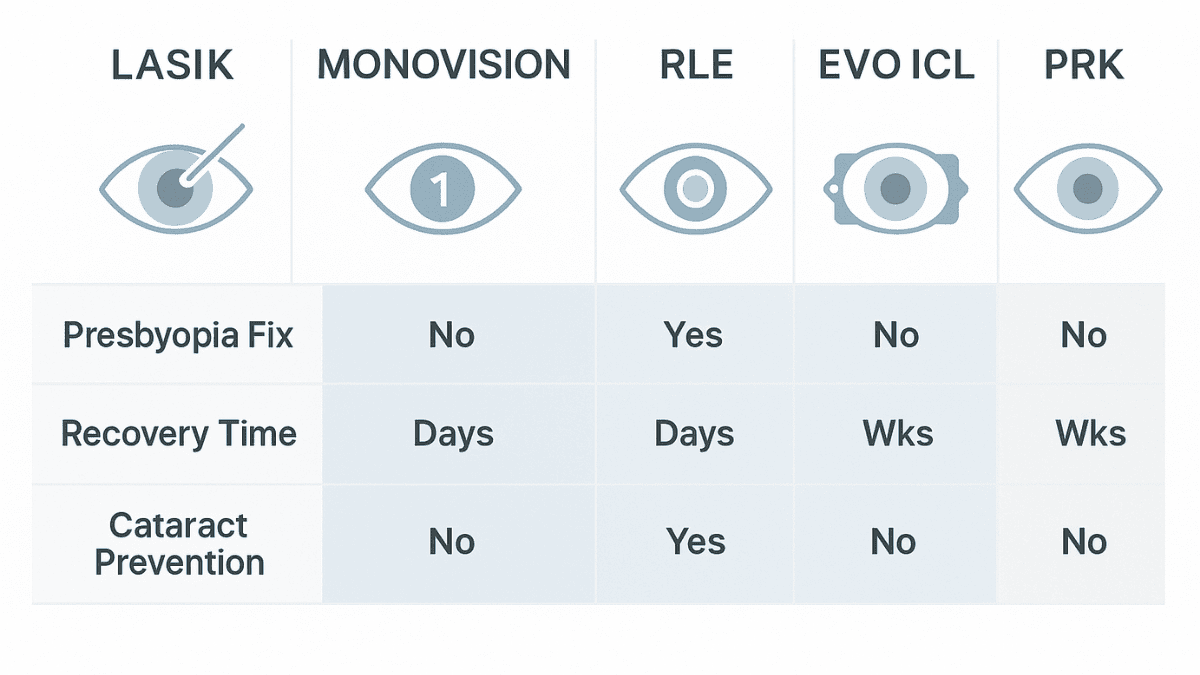
Is LASIK Worth It at 40? Let’s Weigh It Up
The question of whether lasik is worth it at 40 is significant and deeply personal. The answer depends largely on your individual vision goals, lifestyle, and tolerance for wearing glasses or contact lenses. If you lead an active life and find glasses or contacts cumbersome for distance-focused activities, LASIK can still offer a transformative improvement in your quality of life.
Imagine the freedom of hiking, swimming, playing sports, or simply waking up with clear vision without reaching for your glasses. However, this potential benefit must be balanced against the reality of presbyopia. If you opt for standard LASIK to correct your distance vision, you will almost certainly still need to wear reading glasses for close-up tasks.
The American Academy of Ophthalmology notes that presbyopia is an almost universal experience. If you choose monovision LASIK and adapt successfully, you might significantly reduce your dependence on glasses for both distance and near vision, which for many, makes the lasik surgery absolutely worthwhile. Consider how much your current reliance on corrective lenses impacts your daily routine and ability to enjoy activities you love.
Discussing these factors with your eye doctor will help you evaluate if the benefits outweigh the compromises. An improved quality of life is often a major motivator for those considering lasik vision correction. For some, the thought of needing only low-strength prescription reading glasses occasionally is a big step up.
Related Article
LASIK vs Glasses: A Lifestyle Comparison
What About the Safety and Success of Lasik Eye Surgery After 40?
LASIK boasts a strong safety record, and this generally applies to individuals undergoing lasik after 40. The lasik procedure itself is well-established, with surgeons possessing extensive experience. The potential risks are similar to those faced by younger patients, including temporary side effects like dry eyes, glare, or halos around lights, particularly affecting night vision.
Most of these side effects are transient and tend to diminish as your eyes heal. One consideration that can be more prevalent with age is dry eye syndrome. LASIK can sometimes temporarily exacerbate pre-existing dry eye symptoms, so your doctor will want to manage this eye condition effectively before and after your laser surgery. Careful pre-operative screening will also check for other eye conditions like macular degeneration, which, while not caused by LASIK, is more common with age and could affect suitability.
Success rates for lasik laser eye surgery remain high, with most patients achieving significantly improved vision, often 20/20 or 20/25 for distance (or for the distance-corrected eye in monovision setups). Patient satisfaction frequently hinges on having realistic expectations, especially regarding near vision and the potential ongoing need to wear reading glasses for certain tasks. Comprehensive post-operative eye care is also crucial for a smooth recovery and optimal results.
Related Article
LASIK Surgery Success Rates & DataAre There Other Vision Correction Paths Besides LASIK After 40?
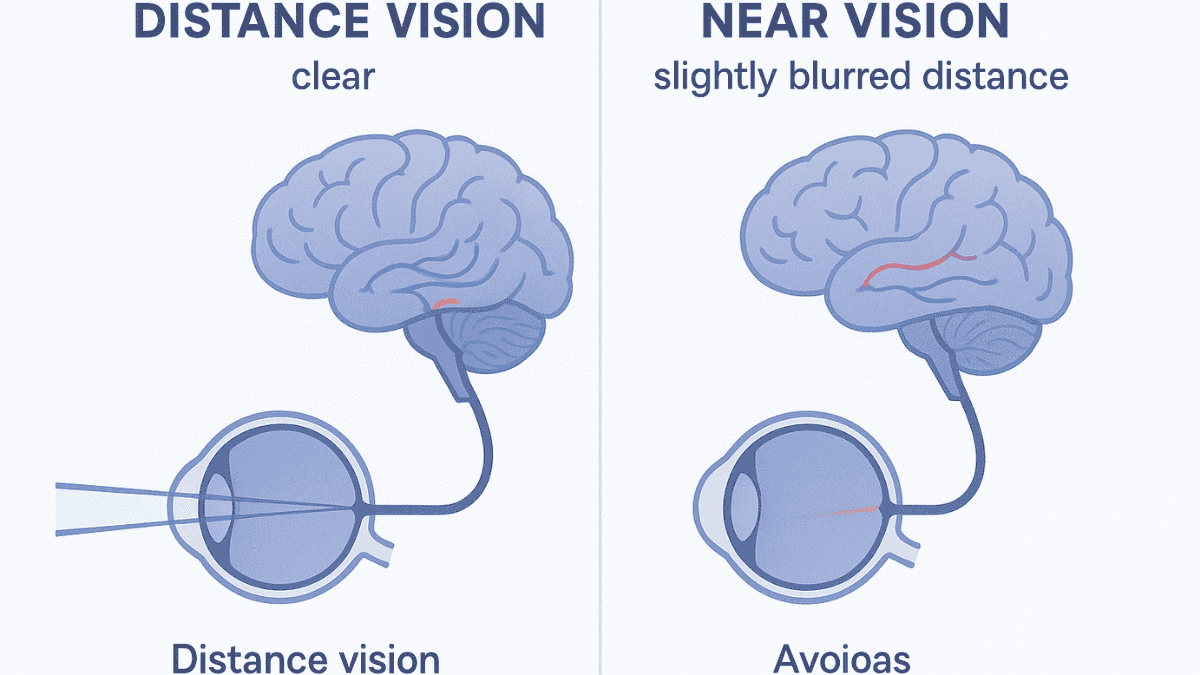
Yes, several alternative vision correction paths exist if lasik after 40 doesn’t seem like the ideal solution for you, or if you’re not a suitable candidate for the procedure. Exploring these other vision procedures can help you make a well-rounded decision about how to address vision problems related to aging and refractive error.
- Reading Glasses: This remains the simplest and most common fix for presbyopia. They are affordable, widely available, and come in various strengths to help you wear reading materials comfortably.
- Bifocal or Progressive Contact Lenses: Similar to bifocal eyeglasses, these contact lenses incorporate different zones for near and distance vision. They can be a good non-surgical choice for some individuals seeking freedom from glasses.
- Refractive Lens Exchange (RLE): RLE is a procedure more akin to cataract surgery. During refractive lens exchange, your eye’s natural lens is removed and replaced with an artificial intraocular lens (IOL). Advanced IOLs, such as multifocal or extended depth of focus (EDOF) lenses, can correct distance vision, near vision, presbyopia, and astigmatism simultaneously. A significant benefit of this lens exchange is that you will not develop cataracts later in the treated eye because the natural eye lens is gone. It is more invasive than LASIK but can offer a more comprehensive and permanent solution for presbyopia, often considered by those looking at LASIK at age 50 or older. This type of presbyopia surgery effectively replaces the aging eye lens.
- EVO ICL (Implantable Collamer Lens): The EVO ICL is an additive lens implanted in the eye, working with your natural lens to correct vision. It’s an excellent option for those with moderate to high myopia, astigmatism, or thinner corneas who may not be ideal candidates for LASIK. It does not correct presbyopia directly but offers sharp, clear vision and UV protection.
- Photorefractive Keratectomy (PRK): PRK is another type of laser surgery that reshapes the cornea to correct refractive errors like myopia, hyperopia, and astigmatism. Unlike LASIK, PRK does not involve creating a corneal flap, making it a suitable alternative for individuals with thin corneas or those involved in high-contact sports. Recovery can be longer and initially more uncomfortable than LASIK, but final visual outcomes are comparable.
- Corneal Inlays: These are very small, thin devices implanted into the cornea of one eye (typically the non-dominant eye) to improve near vision affected by presbyopia. They work by changing the way light focuses onto the retina for close tasks. The availability and specific types of corneal inlays can vary, so it’s a topic to discuss in detail with an eye specialist if you’re seeking alternatives to traditional lasik or monovision.
Each of these LASIK alternatives has its own distinct advantages, disadvantages, recovery profiles, and costs. A detailed discussion with your ophthalmologist or lasik surgeon can help determine which vision correction procedure, if any, is best suited for your specific eye conditions, vision prescription, and lifestyle aspirations.
To help compare, here’s a brief overview of some key differences:
| Feature | Standard LASIK | Monovision LASIK | Refractive Lens Exchange (RLE) | EVO ICL | Photorefractive Keratectomy (PRK) |
|---|---|---|---|---|---|
| Primary Correction | Distance vision (myopia, hyperopia, astigmatism) | One eye distance, one eye intentionally near | Distance, near, astigmatism (with advanced IOLs), presbyopia | Distance vision (myopia, with or without astigmatism) | Distance vision (myopia, hyperopia, astigmatism) |
| Presbyopia Solution | Requires reading glasses for near tasks. | Reduces need for reading glasses by blending vision. | Can correct with multifocal/EDOF IOLs, a type of presbyopia surgery. | Does not directly correct presbyopia; may need reading glasses. | Requires reading glasses for near tasks. |
| Procedure Involves | Corneal flap creation, laser reshaping | Corneal flap creation, laser reshaping (different targets per eye) | Removal of natural eye lens, IOL implantation | Implanting an additive lens behind the iris, in front of the natural lens | Corneal surface reshaping with laser, no flap |
| Cataract Prevention | No | No | Yes, as natural lens is removed. | No | No |
| Ideal Candidate Focus | Stable refractive error, healthy cornea | Presbyopic individuals comfortable with vision blending | Typically over 50, presbyopic, may have early cataracts, desire to reduce glasses for all distances | Moderate to high myopia, astigmatism, thinner corneas, not ideal for LASIK | Thinner corneas, active lifestyles, certain corneal conditions precluding LASIK |
| Recovery | Rapid, often next-day functional vision | Rapid, brain adaptation takes days to weeks | Gradual, visual stabilization over weeks to months | Very rapid, often next-day functional vision | Slower, initial discomfort, several days to weeks for clear vision |
Related Article
LASIK vs Lens Replacement SurgeryWhat Should I Expect When Preparing for a LASIK Consultation After 40?
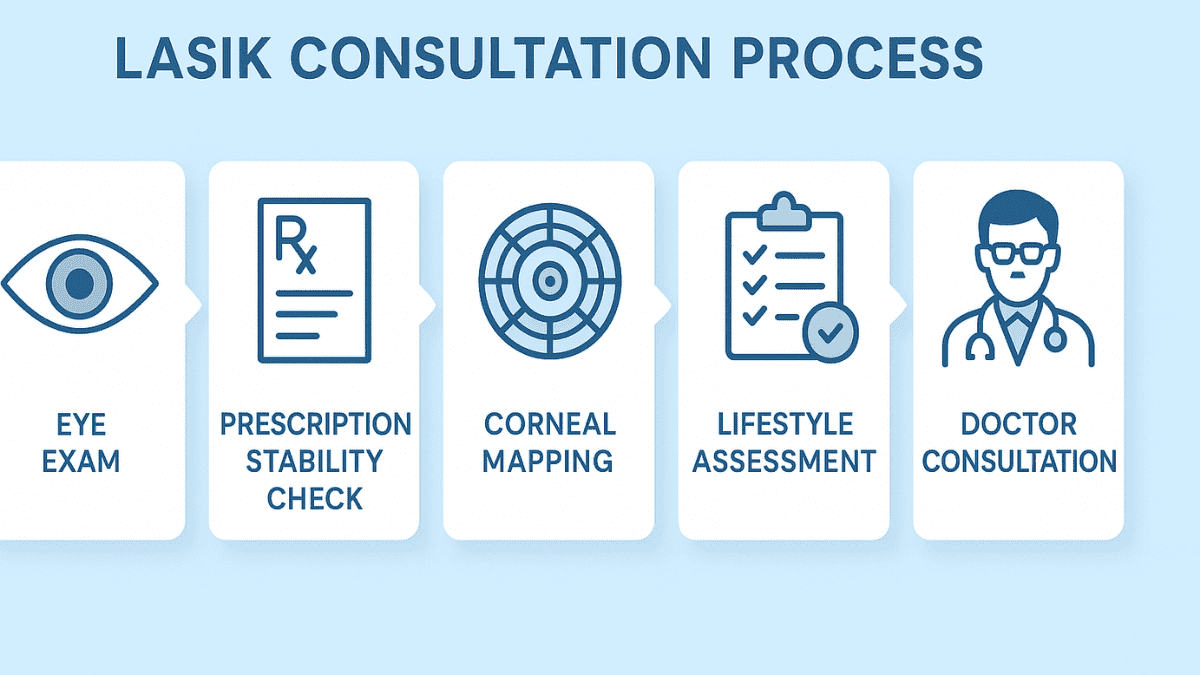
If you are contemplating lasik eye surgery after 40, the initial and most crucial step is a comprehensive consultation with an experienced refractive surgeon at a reputable vision center. This appointment is far more involved than a standard vision check. The clinical team will perform an array of detailed tests, including corneal topography to map the surface of your cornea, to thoroughly assess your eye health and ascertain if you meet the stringent requirements for any lasik procedure.
Be prepared to discuss your complete medical history, any medications you currently take, and your specific vision goals. What do you hope to achieve through lasik vision correction? What are your primary frustrations with your current vision, whether it’s hyperopia, astigmatism, or simply the need to wear reading glasses? Do not hesitate to ask questions; perhaps inquire about the surgeon’s experience with patients your age, their success rates with monovision LASIK specifically, and the details of post-operative eye care. For instance, if you’re in Kansas City, you’d ask about local follow-up options.
The lasik evaluation will also include measurements of your current vision prescription, corneal thickness, pupil size in various lighting conditions, and checks for dry eye or other underlying eye conditions. This thorough assessment is fundamental to ensuring both the safety and effectiveness of the proposed laser surgery. Understanding whether you’ll still require low-strength prescription reading glasses is a key part of this discussion.
Key Things to Remember About Laser Eye Surgery at 40
Opting for laser eye surgery at 40 involves several important considerations. Firstly, presbyopia becomes a central element of the discussion. You will need to decide how you wish to manage your near vision post-surgery—whether through monovision LASIK, accepting the continued use of reading glasses for close tasks, or potentially exploring other presbyopia surgery treatments like RLE.
Secondly, your overall eye health is paramount; the healthier your eyes are, the better your prospects for an excellent outcome from any vision procedures. A stable vision prescription is also a prerequisite. Your lasik vision goals might differ from someone younger, focusing more on functional independence rather than absolute perfection at all distances without any aids.
Perhaps the most critical aspect is setting realistic expectations for your lasik vision. LASIK can offer remarkable freedom from glasses and contact lenses for distance vision. However, if you are over 40, it’s generally not a singular solution for all vision distances without some form of compromise or an additional strategy for near work. Clear and open communication with your lasik surgeon will help you fully understand what laser eye surgery can and cannot achieve for you at this stage of life, enabling you to make an informed choice that you will be happy with for years to come and achieve an improved quality of vision and life.
Conclusion
SSo, is lasik after 40 a good idea? For many individuals, the answer is a definite yes. It can lead to significant enhancements in clear vision and overall quality of life, allowing them to enjoy activities more freely. The technology behind laser eye surgery is sophisticated, and surgeons are adept at addressing the specific needs of patients in this age group seeking to restore vision.
The primary difference compared to undergoing LASIK at a younger age is the inevitable presence of presbyopia. However, with tailored approaches like monovision lasik, or by understanding and accepting the potential need for reading glasses for close-up work, fantastic results are still achievable. A comprehensive lasik evaluation and an in-depth discussion with an experienced eye surgeon, perhaps one specializing in refractive lens exchange or other presbyopia surgery options, is the most effective way to determine if lasik after 40 is the right path for your eyes, your vision prescription, and your lifestyle.
Related Article
What to Expect Before and After LASIKYes, LASIK is possible after 40 if your eyes are healthy and your prescription is stable.
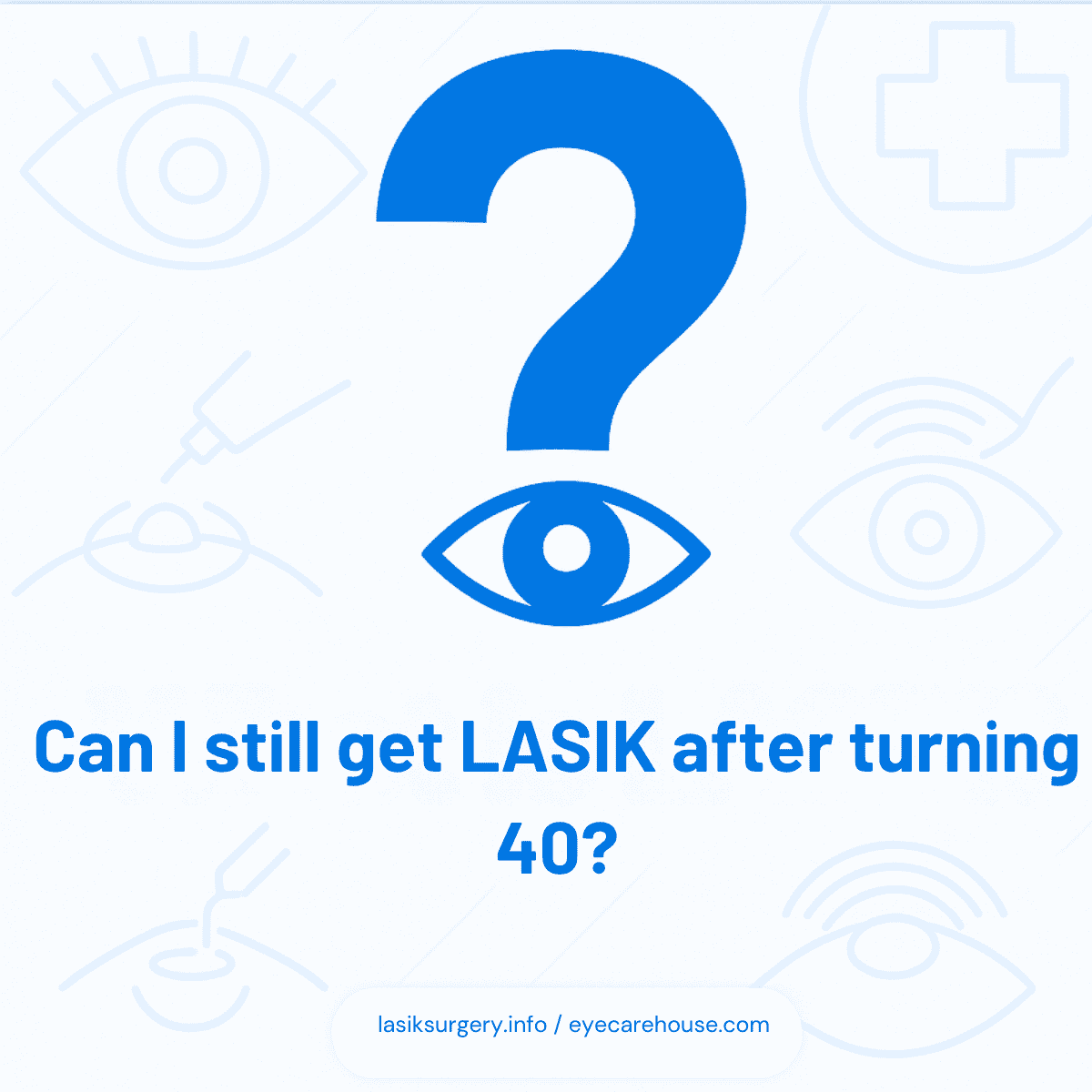
After 40, presbyopia affects near vision due to lens stiffening, which LASIK doesn’t fully treat.
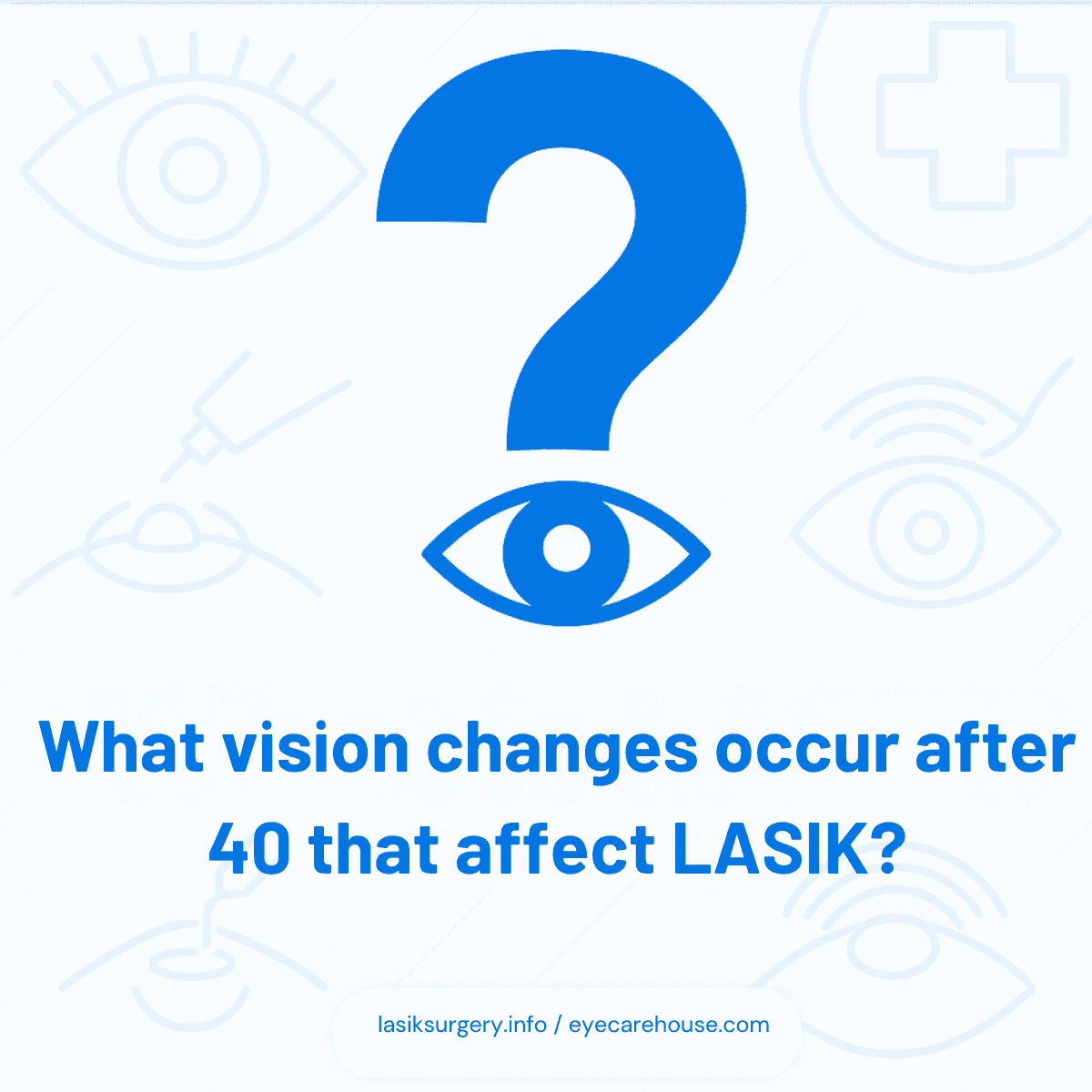
No, standard LASIK does not cure presbyopia, only distance vision issues.
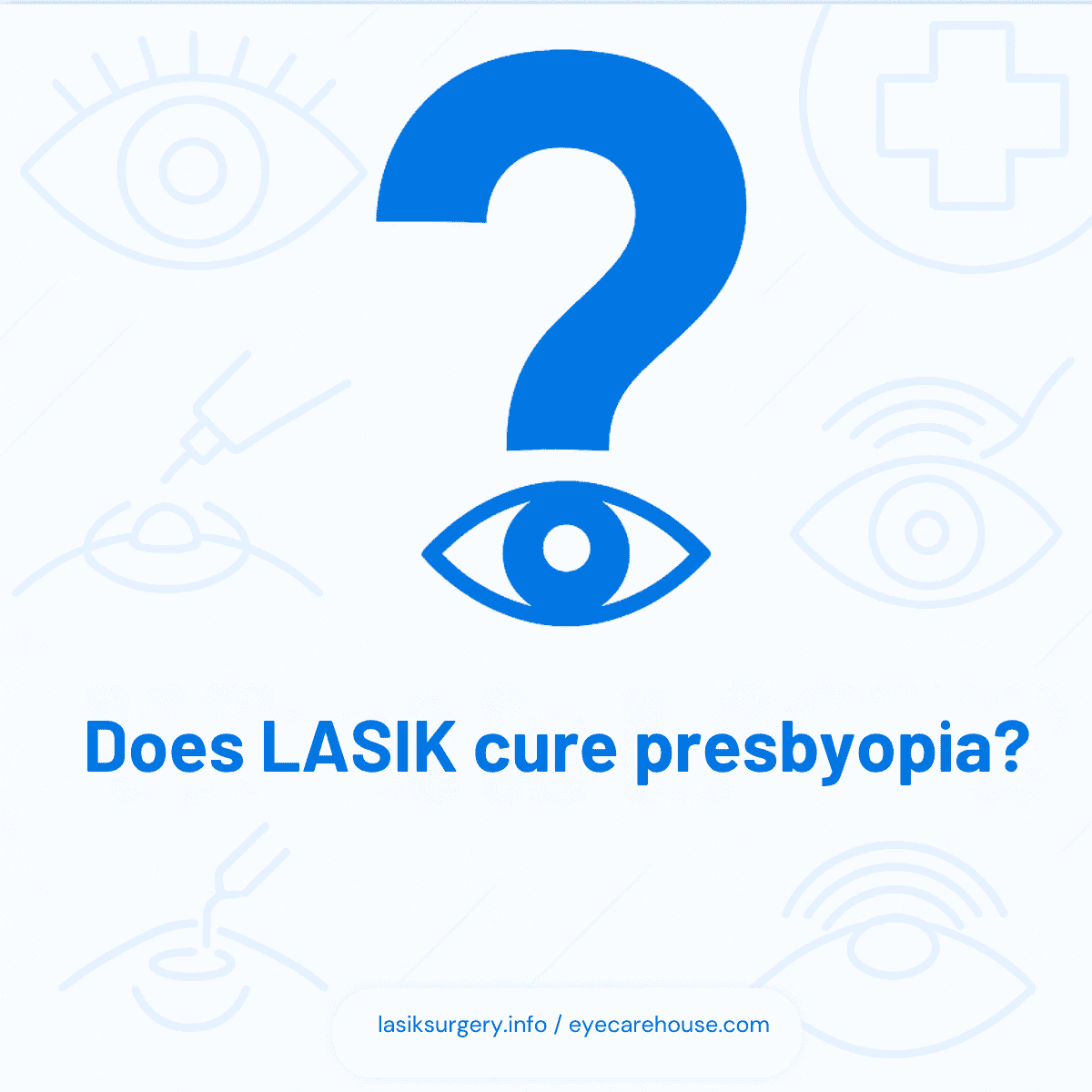
Monovision LASIK treats one eye for distance, one for near. Some adapt well, others may not.
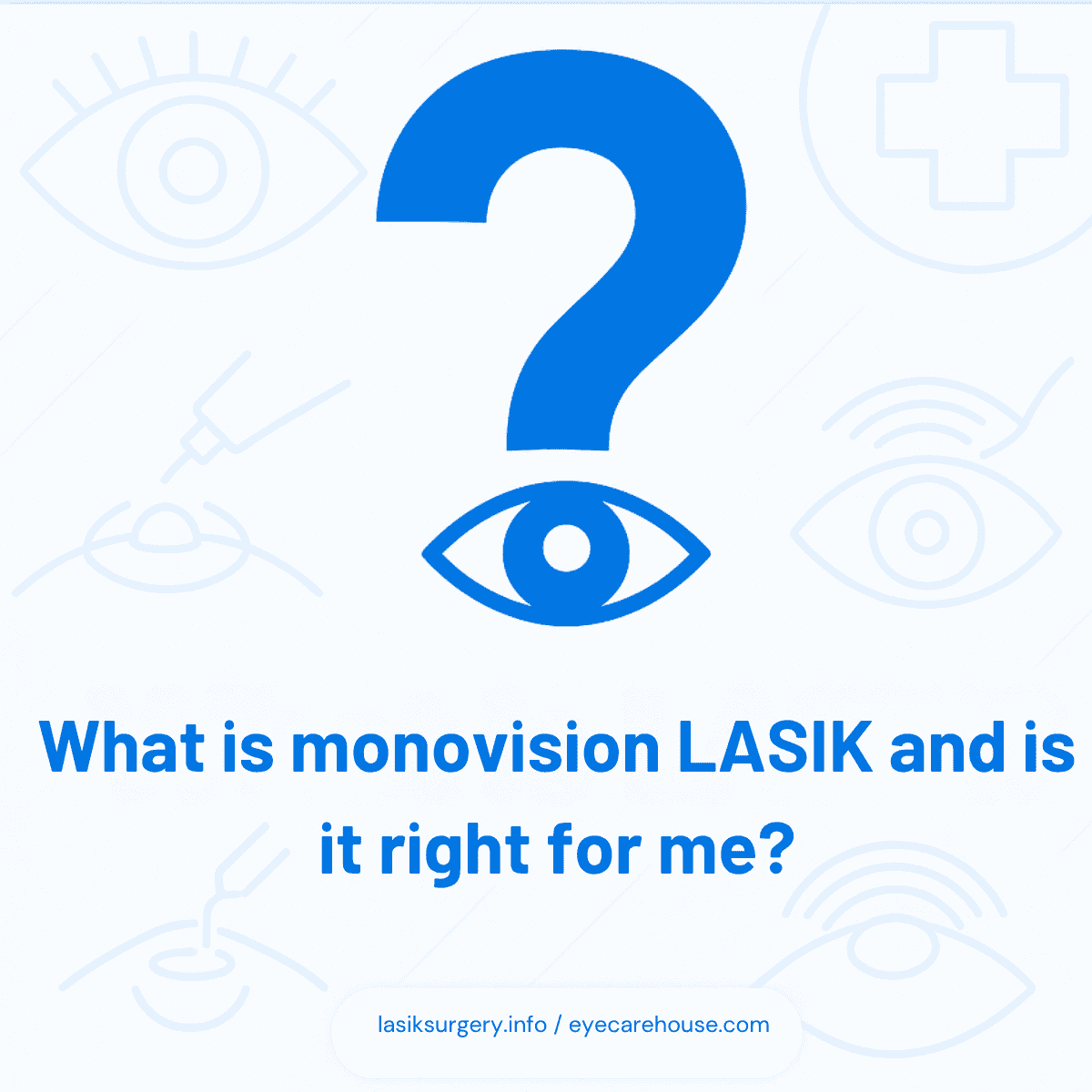
Likely yes, unless monovision or lens replacement is chosen.
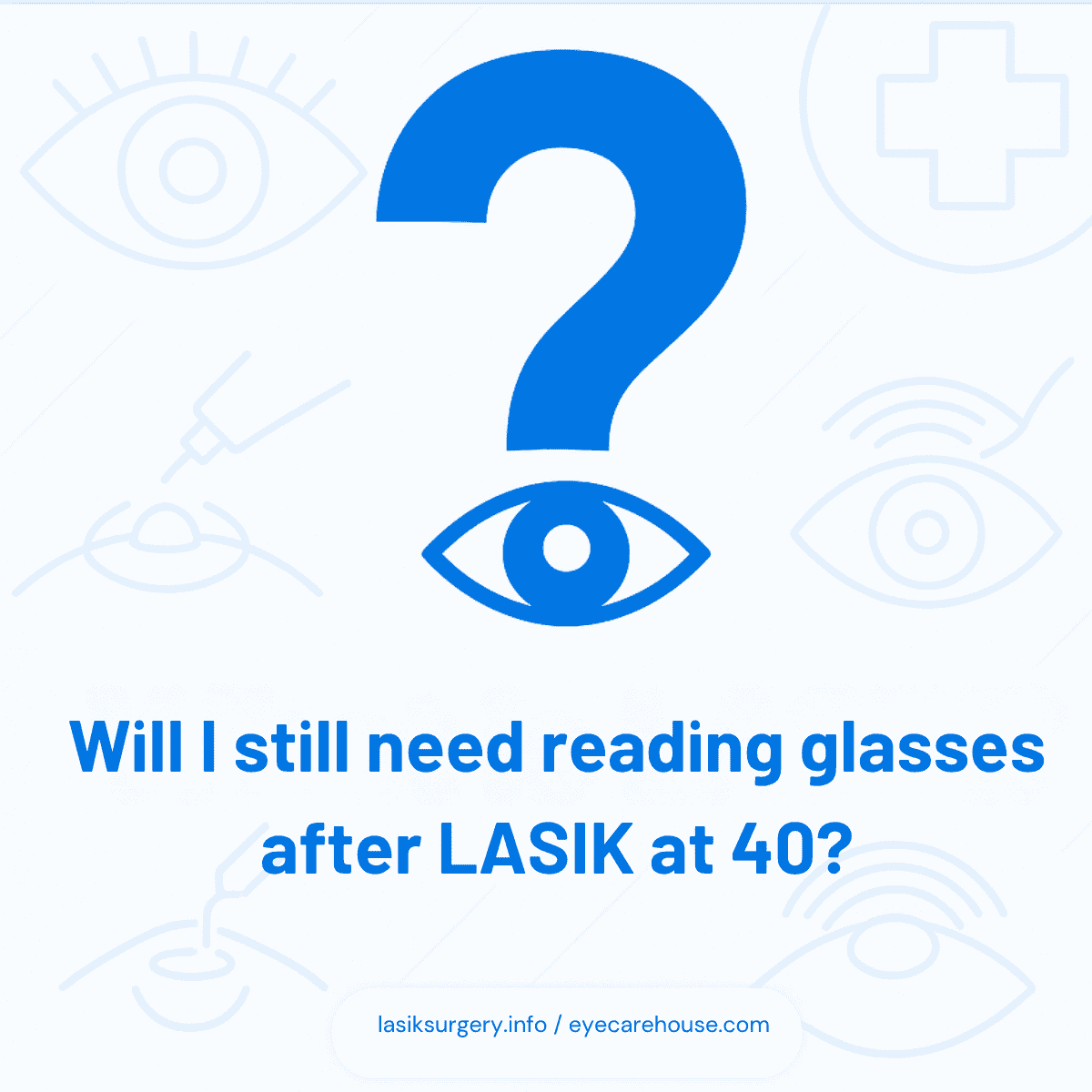
Yes, with good eye health and evaluation, LASIK remains safe in midlife.
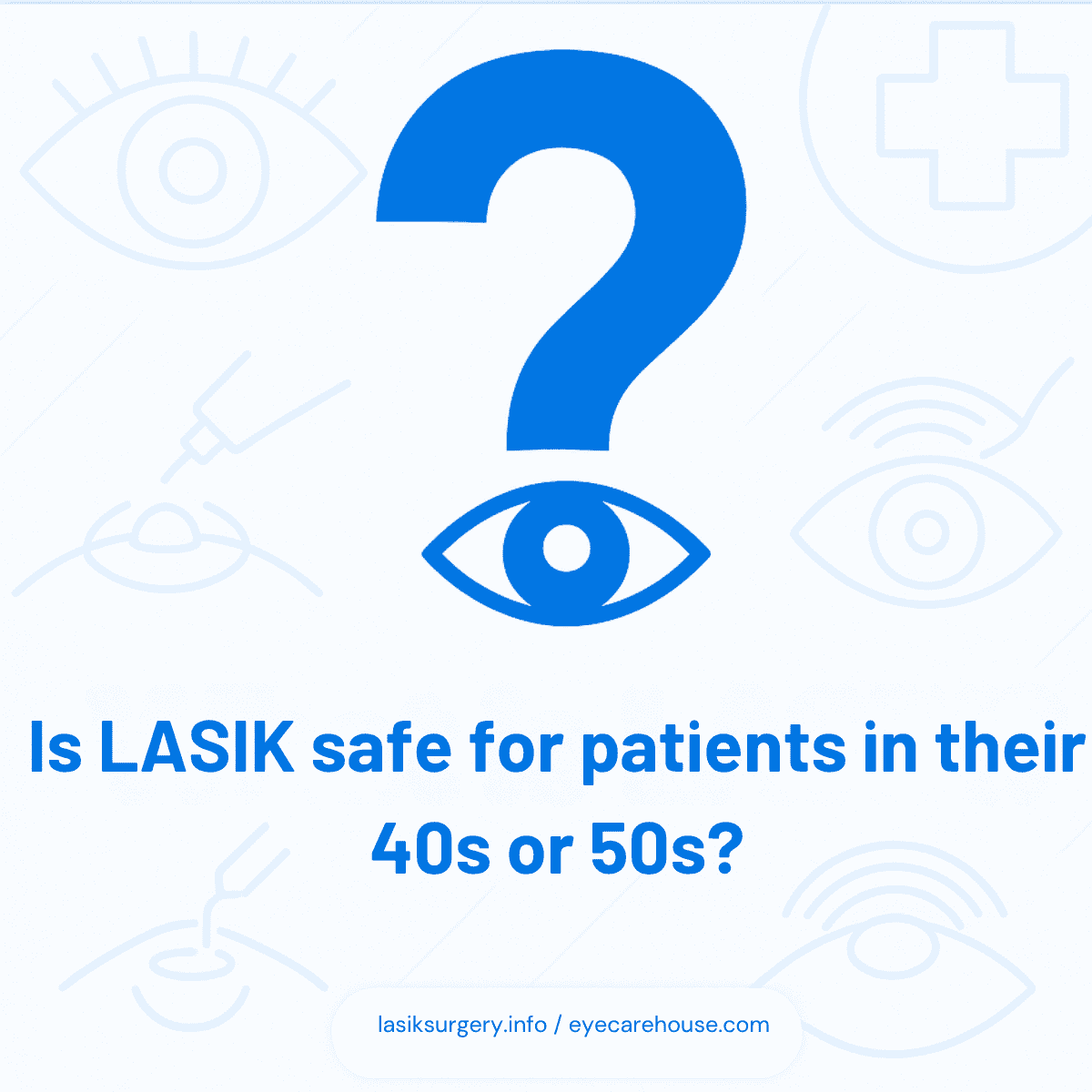
Age-related dry eye can affect healing; treatment before surgery is key.
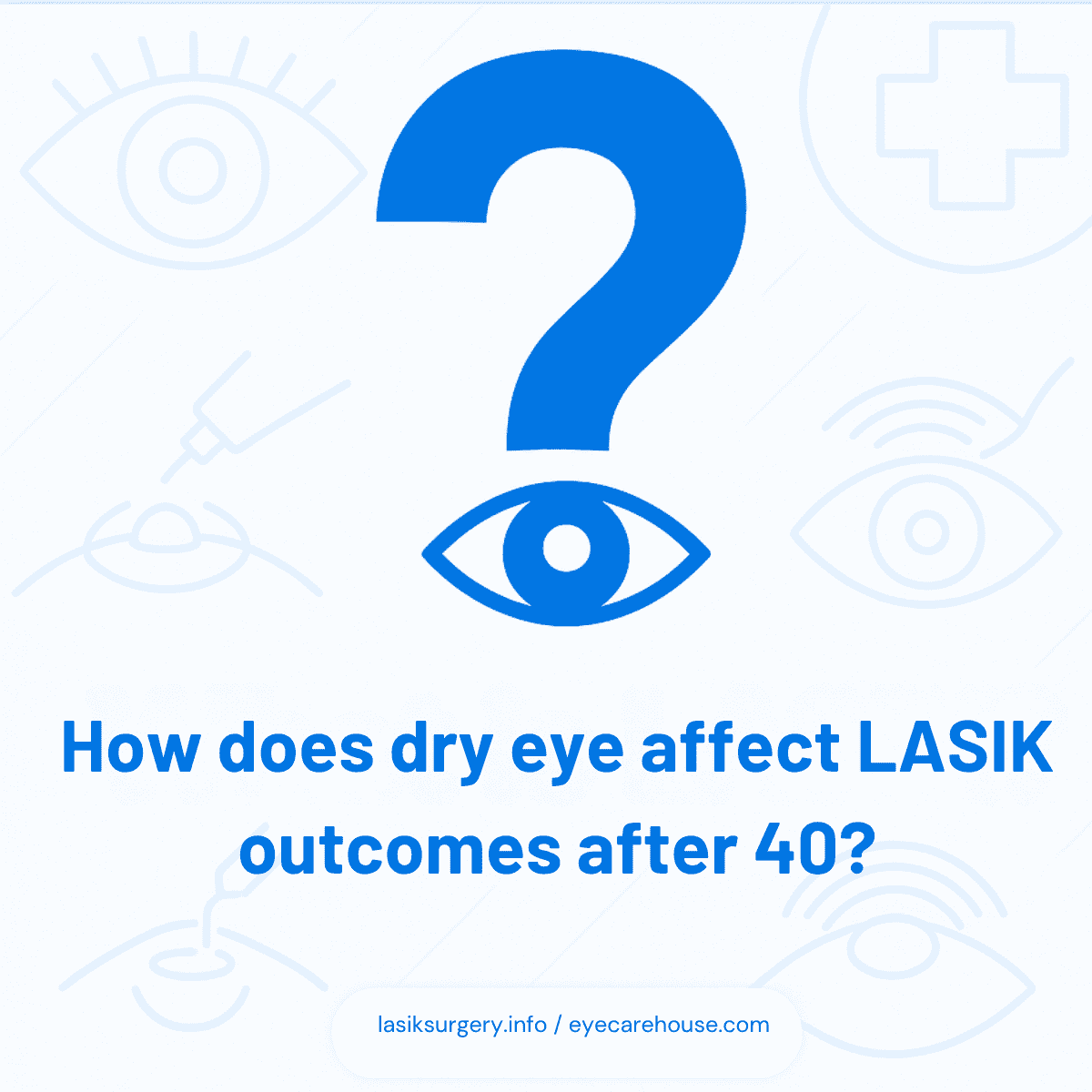
LASIK reshapes the cornea; RLE replaces the lens and treats presbyopia too.
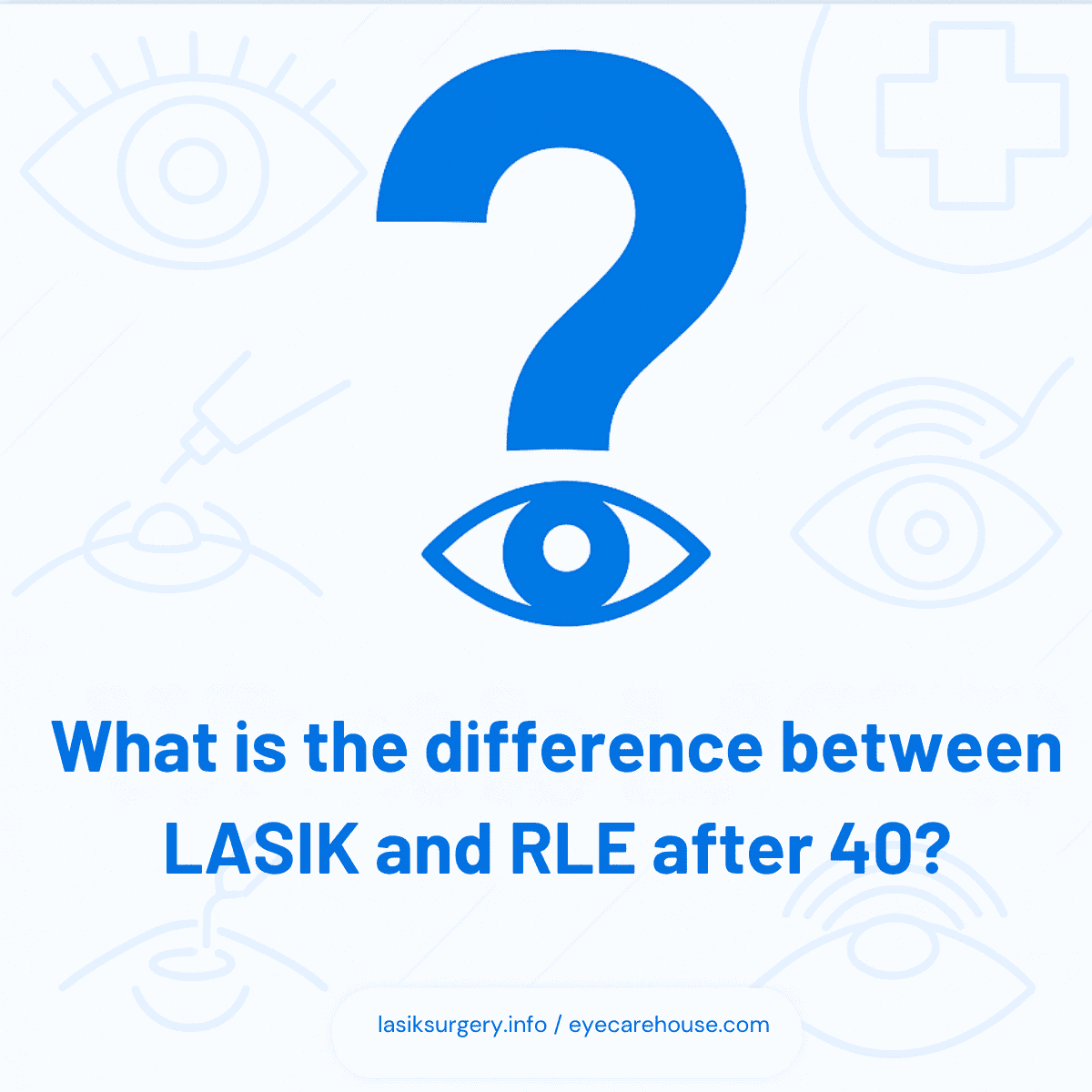
Recovery is fast, but brain adaptation (esp. in monovision) may take longer.
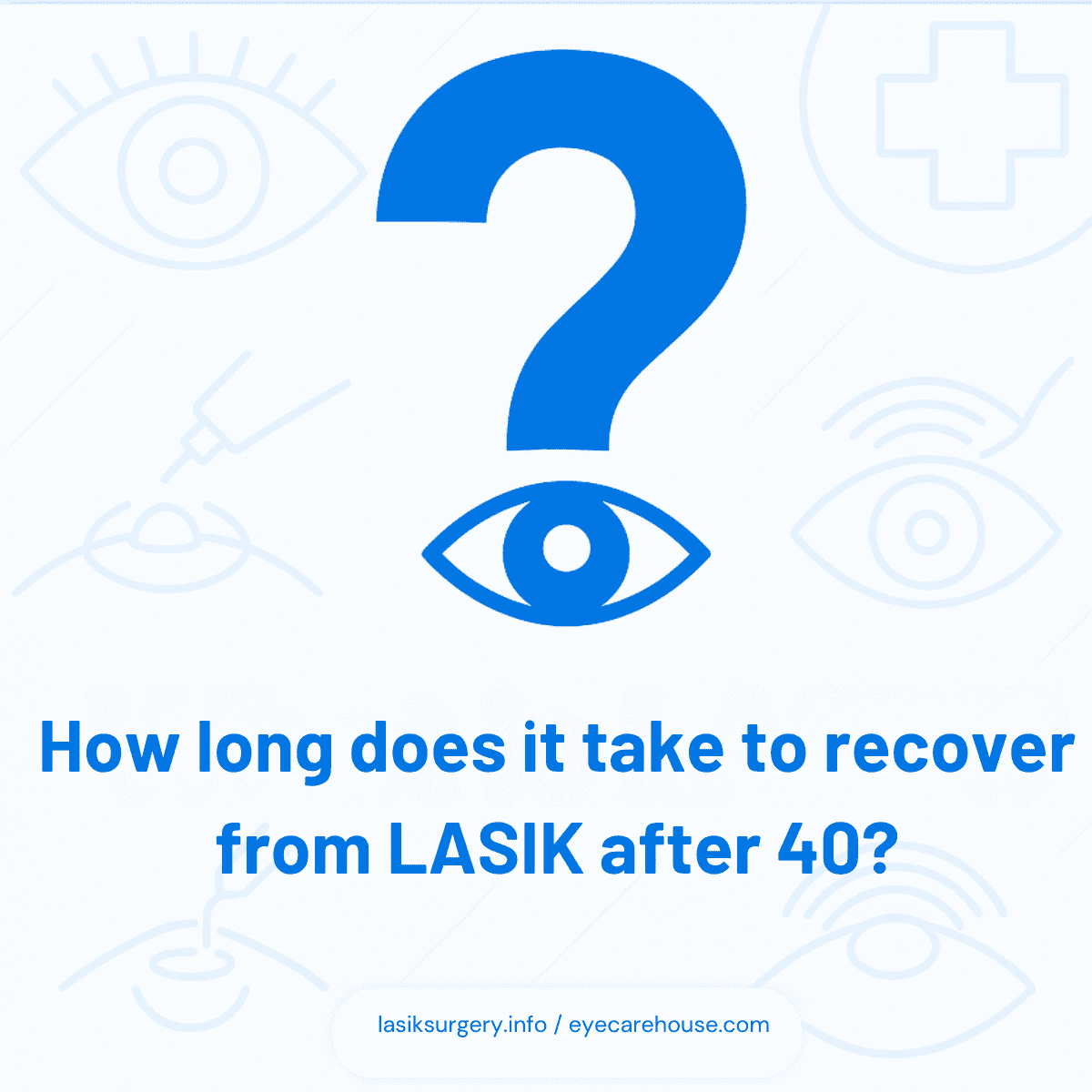
A thorough exam: corneal map, dry eye test, and lifestyle discussion.
